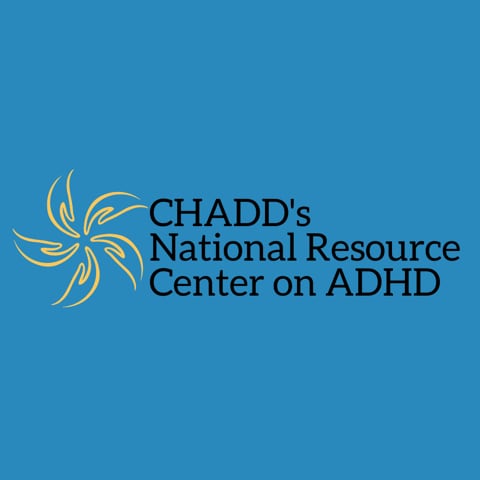
Many children with attention-deficit/hyperactivity disorder (ADHD) struggle with school. Right now, children face a variety of changes in the way that they attend school. Some might be attending virtual classes; others might attend school in-person with many new rules. To help your child with ADHD adjust to these changes, learn about the resources available for parents.
ADHD and schools
Children with ADHD experience more obstacles in their path to success than the average student. The symptoms of ADHD, such as inability to pay attention, difficulty sitting still, and difficulty controlling impulses, can make it hard for children with ADHD to do well in school.
Most children with ADHD receive some school services. This can mean special education services, such as individual or small group instruction with a special education teacher; or accommodations, such as changing how assignments, tasks, and tests are done, extra help with remembering and organizing work, and frequent communication. Together, teachers and parents can help children with ADHD succeed in school.
A changing school environment
Currently, children are experiencing changes in their learning environment. In the spring, many schools switched from in-person schooling to distance schooling, including learning at home and online. As we start the new school year, some schools will continue with virtual-only schooling, others will have a mix of in-person and virtual schooling, and some will return to in-person schooling, but with additional rules in place.
School can present challenges for many children with ADHD.pdf iconexternal icon Because ADHD symptoms include difficulty with attention regulation, hyperactivity, and impulsivity, which can affect planning, organizing, and managing behavior, many children with ADHD struggle with change. Here are some of the challenges that children with ADHD can face:
- Children with ADHD might need structure and predictability more than their peers.
- Physical activity and movement are important for all children, but especially so for children with ADHD. Virtual learning can mean sitting in front of a computer without moving from class to class, and changes in after-school activities may mean fewer opportunities for active group play. This may be especially hard for children who struggle with hyperactivity.
- Children with ADHD struggle more with boredom and putting mental effort into challenging tasks. Virtual learning or in-person school with more rules may lack the novelty and excitement that keep children with ADHD from being bored and keep them engaged in learning.
- Children with ADHD are more likely than their peers to have some difficulties with social relationships, so having fewer opportunities to interact freely may mean less time to practice social skills and build on relationships.
- Transitions can be challenging for children with ADHD, and having to spend time doing schoolwork, homework, and family activities in the same space where parents may also have to do their own work can create additional stress for students and parents.
- Children with ADHD are likely to have other disorders in addition to ADHD, which can make coping with stress, change, and social isolation associated with virtual learning even more difficult.
With the changes in how school is being conducted, there is also the possibility that children who have special needs are not getting the services they need. The U.S. Department of Education has issued information for implementing special education services for schools that use distance learning.pdf iconexternal icon
However, some children with ADHD may respond positively to some of the changes. For example, virtual learning may provide fewer distractions for children who find it more difficult to tune out other people around them. More structured classrooms with more distance between students might help some children focus. With fewer activities in their daily schedules, some children may have more time to get the sleep they need. Since each child may react differently to changes in their environment, parents, teachers, and students need support that works for each individual child.
Working to help parents, students, and teachers

Information and Resources
To help parents and students adapt to the changing environment, the National Resource Center on ADHD (NRC), a funded CDC partner, has worked to create resources and supportexternal icon for parents. These resources include advice for parents and teachers on
- creating enough structure so that the child can learn new routines,
- keeping the child engaged with learning,
- managing difficulty with attention while coping with changes,
- setting up the home learning environment,
- helping children stay connected with other children, and
- keeping children healthy and active.
Caring for a child with special needs can mean extra challenges. Parents of children with ADHD may experience extra stress from supporting their child while coping with changes and may need additional help. The NRC has created a parent toolkit,external icon including information and resources to help parents understand more about ADHD and how to support their child, and tips and advice that help parents with their own stress during uncertain times.external icon
CDC also provides information and resources for parents making decisions about schooling, coping with their own stress, and ensuring children’s well-being.
Schools are a part of ADHD treatment
To meet the needs of children with ADHD, schools can
- Be part of effective treatment plans for children with ADHD; and
- Provide special education services or accommodations.
The American Academy of Pediatrics’ recommendations for ADHD treatment state that school is a necessary part of any treatment plan. Behavioral classroom management focusing on positive responses is an evidence-based treatment for ADHD and can complement parent training in behavior management. The NRC also provides some tips for receiving treatment via when in-person treatment is not possible. Parents, teachers, healthcare providers, and older children and teens can collaborate to develop an approach that works best for each student.

